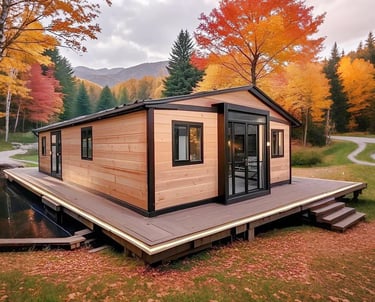The Green Blueprint: Sustainable Practices in Container House Manufacturing
container houses
11/14/20251 分钟阅读
Sustainability is no longer an afterthought; it is a fundamental principle guiding the modern container house production process. Forward-thinking factories are transforming into hubs of green manufacturing, where eco-friendly materials and energy-efficient practices are standard.
The commitment often starts with Energy-Efficient and Smart Production. Modern facilities are increasingly automated and utilize technologies like automated welding and CNC cutting to minimize material waste-4-9. Some industry leaders are making significant investments in R&D to refine these processes, ensuring they are not only precise but also consume less energy-2. This results in a container house that has a lower embedded carbon footprint from day one.
Inside the factory, the focus shifts to Eco-Conscious Material Selection. The use of non-toxic, recyclable materials is paramount. Many manufacturers now use steel frames with a high recycled content, and walls are insulated with formaldehyde-free materials like rock wool or EPS panels, which also enhance thermal performance-3-9. The shift towards water-based paints and powder coatings further reduces the emission of volatile organic compounds (VOCs), ensuring better indoor air quality in the final home-9.
This sustainable mindset culminates in a Circular Economy Model. The very nature of a modular building designed for disassembly and reuse is a direct challenge to the wastefulness of traditional construction. A high-quality container house can have a service life of 15-20 years and can be relocated and reused 5-8 times over its lifespan-7-9. Furthermore, at the end of its life cycle, the steel structure is nearly 100% recyclable-6. This stands in stark contrast to conventional construction, which generates enormous amounts of waste, making the container home house a champion of the "reduce, reuse, recycle" philosophy.


Contact
Get in touch with our team today.
Follow
Connect
email : findhomefh@gmail.com
© 2025. All rights reserved.




